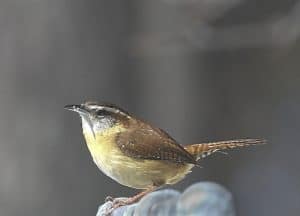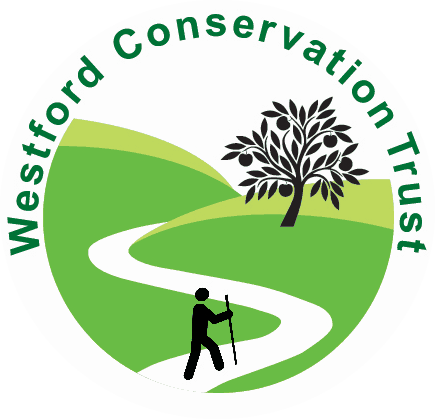
Scientists have only recently learned that birds, like insects, can see ultraviolet light. Birds can see the entire spectrum of light from ultraviolet to infrared. They see the same colors we see, but much more. And this explains a lot. The history of research on this phenomenon is reported in The American Institute of Biological Sciences publication, BioScience. In the October, 2000 article called “Taking a Bird’s Eye View”, Jay Withgott tells us that research into bird vision in UV light was first studied by Dietrich Burkhardt in Belgium, then in the 1970’s at Yale University by Timothy Goldsmith, and has been studied since the 1980’s by Andrew Bennett at Bristol University in England. Have you ever wondered how birds with seemingly identical plumage can tell male from female apart? How does the female chickadee know that handsome bird in another tree is a male? How does she know that bird that just flew over to the feeder is a rival female? In many bird species such as mockingbirds, catbirds, starlings, and blue jays, males and females look the same to us, but not to each other. Recent studies show that the males of these species sport an additional feather type–a patch of UV reflective feathers, often on the head, which make them stand out like light bulbs.
Birds use their ability to see UV light in other ways too. Most insects and some mammals are UV reflective too. I have often wondered how parent birds find so many caterpillars and insects in the yard to feed their nestlings. My daughter and I recently watched a pair of Carolina wrens that were nesting in a hanging plant on her deck. She and her husband put up a nest cam to be able to monitor what was going on. The energy of those parent birds was amazing. One or the other brought an insect to the babies every two minutes, from about 5 a.m. to about 8 p.m.; about 900 insects a day, divided among four nestlings, which makes about 225 insects per nestling per day. At first they brought soft green inchworm caterpillars, the equivalent of bird pablum. After a few days, it was larger insects like katydids, moths and dragonflies. The last few days they were stuffing huge beetles down four ravenous throats. Within two weeks, those babies progressed from pink, blind, roly-poly fetuses that couldn’t hold up their heads, to fully feathered Carolina wrens, that could hop out of the nest and fly down to the bushes by the deck. How had the parents ever been able to find so many insects, so many calories, to enable such exponential growth? We humans couldn’t find any of those perfectly camouflaged insects, unless they landed on us.
Studies have now solved the mystery–insects reflect UV light, while leaves do not. To birds, in daytime, insects stand out against the non-reflective leaves like thousands of little fireflies. It has also been shown that meadow voles and other rodents, marking their territory with trails of UV reflective urine, stand out clearly to hawks who surveil the area from above.
Imagine how many nests there might be in each acre of land, and how many insects would be necessary to feed the nestlings and parent birds in one summer. Native trees, especially oaks, support the majority of these insects. We should feel very grateful to the trees and insects for their productivity, and do all we can to protect them. They bring us our birds. Let’s keep our yards organic, producing as many insects and birds as possible. Then we can sit back, enjoy the parent birds quickly finding their shining prey and watch our nestlings grow and fledge.
Many thanks to all flora and fauna reporters for the month of August. Please send reports by September 26, to be included in next month’s column. You can call me at 692-3907, write to me at 7A Old Colony Drive, Westford, or e-mail me at mariancharman@gmail.com
Late July Reports:
Marian/Bill Harman, Old Colony Drive. July 26, four goldfinches, three males, one female. Two blue jays, two hummingbirds, one female and one juvenile male. the juvenile nectared at the catnip plant about five feet from where I was sitting. Three red-winged blackbirds, all female, pileated woodpecker, loudly calling, a great blue heron at Keyes Pond, pair of goldfinches fighting over the feeder, one downy woodpecker, one catbird. Chimney swifts flying overhead, first cicadas heard. July 30, six male goldfinches. July 31, eight goldfinches, seven males, one female. Red-tailed hawk soaring overhead, red-winged blackbirds. Dragonflies, blue dasher males and brown dasher females. One male cardinal.
August Reports:
Marian/Bill Harman, Old Colony Drive. August 1, 88 degrees. Female turkey taking dust bath by the feeder for past two days. Several juvenile blue jays, trying to find their adult voices, making all sorts of clicks, garbles, and sometimes getting out a “Jay” sound or a not very good rendition of a red-tailed hawk. August 5, a tropical storm moved through with lots of wind and rain, but no damage. Juvenile robin on the lawn, looking like an adult male, but with spotted red breast, and spotted black back. August 8, downy woodpeckers, one adult, two juveniles, four goldfinches, two hummingbirds, one chickadee, two chipping sparrows, one juvenile red-tailed hawk, perched in a tree near bird feeder, great blue heron by pond, crows heard, cardinal pair. August 20, three mourning doves six goldfinches two titmice, one female house finch, one female hairy woodpecker. August 22, eight crows on Pilgrim Drive. A walk to the meadow: joe pye weed is blooming, but is half as tall as last year, probably because of lack of rain. Also, white and light lavender asters, goldenrod, all blooming together to make the beautiful colors of fall. Blue jay family, five, on top of dead snag. Five male turkeys. One had flown into neighbor’s window and was unconscious for a few minutes, but revived and rejoined the flock. August 24, hot and humid, thunderstorms. A walk to the beaver dam on Snake Meadow Brook: Swamp loostrife (the desirable native type) around northern edge of Keyes Pond, yellow birch everywhere, some red maples turning fall colors already, two great blue herons hunting in the swamp, one female hummingbird at the feeder. She has repeatedly been chasing her son away from the feeder, and he finally seems to have given up and gone elsewhere. No male in sight for several weeks.
Marilyn Day, Graniteville Rd. August 4, “a vulture circling after lunch time (our lunch time) today–gotta make that clear….It looked like he was missing some flight feathers…. Sent a photo of a feather 9 inches long, brown and barred.”[Marilyn used her scanner to take a very clear photo of the feather–MH]
Diane Duane, Howard Rd. August 14, eastern coyotes barking, howling in area near Beaver Brook, under power lines. August 15, Great Horned owl near Robinwood Circle around 9PM.
Rosemarie Koester, Providence Rd. August 18, “three roosters suddenly appeared on Leland Rd. near the pond….the big talk among the daily walkers there. Animal control got one, not sure where the others are.” August 26, August report: chickadee, tufted titmouse, cardinal pair and a juvenile. “One cardinal sang each evening for us”. Goldfinches, house finch, purple finch pair, sparrows, blue jays, several pairs and one juvenile, doves, grackles have returned, hummingbirds. “Squeaking of a red-tailed hawk juvenile for several weeks, looking for food. I saw the juvenile red-tailed hawk sitting on a branch of our big pine tree. Meanwhile, the blue jays fussed. ” Several turkeys still come to our yard. Several bunnies running around and still eating my hostas. They don’t run away when they see us. Chipmunks all over, several gray squirrels chasing each other. Several different bees and other winged insects on our big white hydrangea bush. The three famous roosters nearby on Leland street are making a lot of crowing. One seemed to be chasing the other two. Several different types of mushrooms, white and beige, in the lawn. “With our hot summer, nearby creek and pond are drying up. Other plants seem to be suffering with burnt edges and dry soil”
Debbie Prato, Hayrick Lane. August 25, Canada geese, mallards, cottontails, woodchuck, ruby-throated hummingbirds, bobcat on the deck during the daytime, the grackles are starting to congregate.
Marian Harman is a member of the Westford Conservation Trust, a non-profit conservation organization dedicated to the preservation of Westford’s open spaces and trails. The Trust welcomes new members and volunteers. Check out our website at westfordconservationtrust.org or visit us on Facebook.
